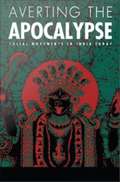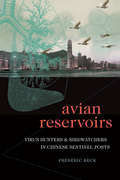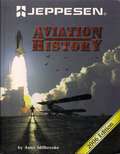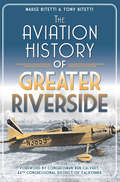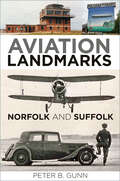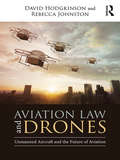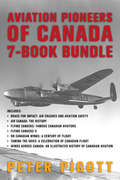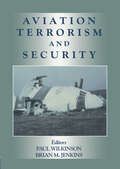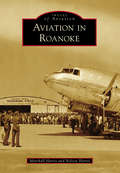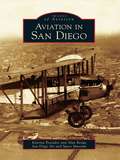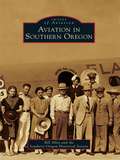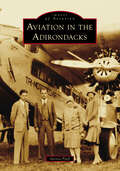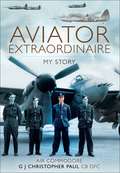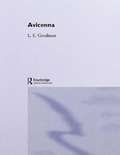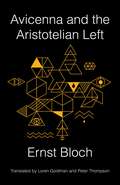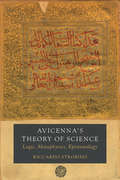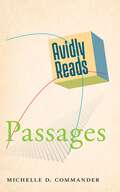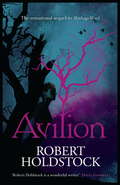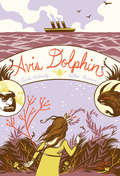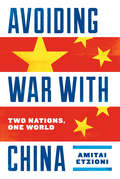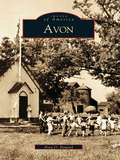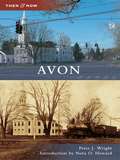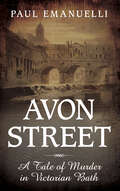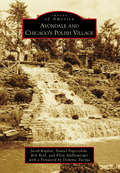- Table View
- List View
Averting Global War: Regional Challenges, Overextension, And Options For American Strategy
by Hall GardnerAverting Global War examines major regional disputes and conflicts throughout the world as they impact upon both American domestic and foreign policy. These include: The ongoing _war on terrorism_; NATO enlargement to Russian borders; US intervention in Iraq; US confrontation with Iran; the feud between Israel and the Palestinians; the widening _zone of conflict_ from Central Asia to sub-Saharan Africa; the global ramifications of North Korea_s nuclear program and China_s claims to Taiwan; Venezuela_s _Bolivarian Revolution_ and the _war on drugs_ in Latin America, the domestic socio-political effects of Latin American immigration upon the US. The book_s goal is to articulate an irenic American strategy intended to resolve, or at least transform, a number of these disputes and conflicts so as to prevent them from further _deepening_ or _widening__and to avert the real possibility of major power confrontation involving both clandestine and overt methods of warfare.
Averting the Apocalypse: Social Movements in India Today
by Arthur BonnerThere are two Indias: the caste and class elite who hold all power and make up 10 to 15 percent of the population, and everyone else. Averting the Apocalypse is about everyone else. Arthur Bonner, a former New York Times reporter with long experience as a foreign correspondent in Asia, conducted interviews over many months while traveling almost 20,000 miles within India seeking out the underclass and social activists who together are beginning to mobilize for social change at the bottom of Indian society. Working in areas torn by violence, Bonner offers a terrifyingly accurate portrait of a society bloodied by decades of unequal social structure and the absence of a civil society and political mechanism capable of responding to the exploitation of the poor and weak. Bonner finds that India's inability or refusal to address its debilitating social structure may be the precursor to an apocalyptic social upheaval unless heed is paid to the social movements that his first-hand investigation reveals.
Avian Reservoirs: Virus Hunters and Birdwatchers in Chinese Sentinel Posts (Experimental Futures)
by Frédéric KeckAfter experiencing the SARS outbreak in 2003, Hong Kong, Singapore, and Taiwan all invested in various techniques to mitigate future pandemics involving myriad cross-species interactions between humans and birds. In some locations microbiologists allied with veterinarians and birdwatchers to follow the mutations of flu viruses in birds and humans and create preparedness strategies, while in others, public health officials worked toward preventing pandemics by killing thousands of birds. In Avian Reservoirs Frédéric Keck offers a comparative analysis of these responses, tracing how the anticipation of bird flu pandemics has changed relations between birds and humans in China. Drawing on anthropological theory and ethnographic fieldwork, Keck demonstrates that varied strategies dealing with the threat of pandemics—stockpiling vaccines and samples in Taiwan, simulating pandemics in Singapore, and monitoring viruses and disease vectors in Hong Kong—reflect local geopolitical relations to mainland China. In outlining how interactions among pathogens, birds, and humans shape the way people imagine future pandemics, Keck illuminates how interspecies relations are crucial for protecting against such threats.
Aviation History
by Anne Millbrooke"Updated with 170 pages of revised content, the 2006 edition of Aviation History places you in the time period, and gives you first-hand accounts by the people who were there. Each event is viewed in the historical context of the economic, political, social and cultural impact. Personal profiles let readers get to know the pioneers who shaped aviation. Historical notes and events, graphs, timelines and more than 800 photos and illustrations aid in understanding. Study questions along with bibliographies at the end of each chapter make review easier."--Back cover.
Aviation History of Greater Riverside, The (Transportation)
by Marge Bitetti Congressman Ken Calvert Tony BitettiEver since aircraft changed the scope of the First World War, flight became both a passion and business in Riverside. Early barnstormers needed places to park, refuel and service their aircraft, so airports started popping up. Alessandro Field became March Field in 1918. By World War II, seventy-five thousand troops were deployed at March. Today's March Joint Air Reserve Base has been a vital wartime training and relay installation and a sentinel of peacetime. In 1925, Roman Warren, known as the "Cowboy Aviator," established Riverside Airport, which later became Flabob Airport. Take to the air with authors Marge and Tony Bitetti as they trace Greater Riverside's history of flight--from Banning, Corona and Riverside Municipal Airports to Perris Airport, Skylark Field and others.
Aviation Landmarks - Norfolk and Suffolk
by Peter B. GunnNorfolk and Suffolk are bursting with aviation heritage, having played key roles in military aviation through the two world wars and beyond. The obvious notable landmarks include airfields past and present, traces of former radar stations, decoy airfields and other sites that were once highly secretive. However, there are less conspicuous ones too – from churches, memorials and museums to local pubs, streets and even village signs.This new edition of Aviation Landmarks: Norfolk and Suffolk offers a fully updated account of aviation heritage and history right up to the present day. With over 500 entries, it covers nearly seventy airfields as well as many lesser-known landmarks such as former radar stations, country houses, local heritage collections, street signs and more. Complete with illustrations, OS grid references and an index of places, this reference guide to the two counties, both in the air and on the ground, will captivate both interested locals and aviation enthusiasts alike.
Aviation Law and Drones: Unmanned Aircraft and the Future of Aviation
by Rebecca Johnston David HodgkinsonThe aviation industry is being transformed by the use of unmanned aerial vehicles, or drones – commercially, militarily, scientifically and recreationally. National regulations have generally failed to keep pace with the expansion of the fast-growing drone industry. Aviation Law and Drones: Unmanned Aircraft and the Future of Aviation traces the development of aviation laws and regulations, explains how aviation is regulated at an international and national level, considers the interrelationship between rapidly advancing technology and legislative attempts to keep pace, and reviews existing domestic and international drone laws and issues (including safety, security, privacy and airspace issues). Against this background, the book uniquely proposes a rationale for, and key provisions of, guiding principles for the regulation of drones internationally – provisions of which could also be implemented domestically. Finally, the book examines the changing shape of our increasingly busy skies – technology beyond drones and the regulation of that technology. The world is on the edge of major disruption in aviation – drones are just the beginning. Given the almost universal interest in drones, this book will be of interest to readers worldwide, from the academic sector and beyond.
Aviation Pioneers of Canada 7-Book Bundle: Brace for Impact / Air Canada / and 5 more
by Peter PigottThe Aviation Pioneers of Canada 7-Book Bundle presents the high-flying insight of Peter Pigott, in a special collection chronicling the aviators, aircraft, and drama of over a century of Canadian flight. From the Avro Arrow and the Silver Dart to the adventurers and visionaries who pushed Canadian airways to new heights, Pigott covers it all with his trademark breezy style and incredible historical photographs. Includes Brace for Impact: Air Crashes and Aviation Safety Air Canada: The History Flying Canucks: Famous Canadian Aviators Flying Canucks II On Canadian Wings: A Century of Flight Taming the Skies: A Celebration of Canadian Flight Wings Across Canada: An Illustrated History of Canadian Aviation
Aviation Terrorism and Security (Political Violence #No. 6)
by Paul Wilkinson Brian JenkinsFirst Published in 1999. Routledge is an imprint of Taylor & Francis, an informa company.
Aviation in Roanoke (Images of Aviation)
by Nelson Harris Marshall HarrisIn 1910, an awestruck crowd at the Roanoke Fair got its first glimpse of powered flight when a Curtiss biplane soared overhead. Within the next decade, gliders were lifting off from hills in South Roanoke and cow pastures were being converted into airstrips. Once Roanoke Municipal Airport was developed in 1929, earlier local airfields such as Cook, Trout, and Horton Fields were rendered inactive. Then in 1941, when--with federal assistance-- the municipal airport became Woodrum Field, the region's air travel transitioned into the modern era and brought services from major airlines to the area. Roanoke's aviation reputation continued to grow when the city played a critical role in military air travel and training during World War II, leading its airport to become one of the busiest on the East Coast. Aviation in Roanoke tells the stories of early airfields, the growth and transformation of Woodrum Field, and the adventures of Roanoke's aviation pioneers.
Aviation in San Diego (Images of Aviation)
by San Diego Air and Space Museum Alan Renga Katrina PescadorFor nearly a century, San Diego has been a hub of aviation development, air power, and flying adventure. The city's ideal weather and protected bay allowed San Diego to have an aviation historyunrivaled by any local community. From the pioneering days of Glenn Curtiss and naval aviation at North Island to the present cutting-edge aerospace technology, Aviation in San Diego captures it all. With many never-before-published photographs, Aviation in San Diego documents thepeople and events that made San Diego's aviation heritage unique. From Ryan to Consolidated, Curtiss to Lindbergh, and everything in between, Aviation in San Diego is the preeminent photographic record of flight in "America's Finest City."
Aviation in Southern Oregon (Images of Aviation)
by Southern Oregon Historical Society Bill AlleyMedford, Oregon, pioneered aviation in Southern Oregon and has long enjoyed a reputation for being an air-minded city. When the City of Medford built Newell Barber Field in 1920, it established the first municipally owned airfield in the state. In 1926, Pacific Air Transport selected Medford as a station for the West Coast airmail route. While Portland's airmail service was located across the river at Vancouver's Pearson Field in Washington, Medford's Newell Barber Field was Oregon's only airmail stop. The 1920s secured Medford's position as a leader in the growth of both civil and commercial aviation. When technology rendered the original field obsolete, the voters handily approved a new, state-of-the-art field that has continued to expand and grow into a major international airport and free trade zone, capable of accommodating some of the world's largest aircrafts.
Aviation in the Adirondacks (Images of Aviation)
by Aurora PfaffSince 1912, when a young man named George Gray landed an open-cockpit biplane on a farmer's field, aviation has played an important role in communities located throughout the 6 million-acre Adirondack Park. Through a range of historic images and postcards, Aurora Pfaff tells the story of pilots who linked communities by air, transported goods and people, and the small towns and airfields that they called home. From the novelty of planes landing on skis and daredevil flying circuses to forest fire patrols, exploration of the vast backcountry, and toy deliveries by Santa, airplanes have opened the Adirondack wilderness and made remote communities more easily accessible for tourists and adventurers. Yet this golden age for aviation would not last, for as car travel became easier and more affordable in the mid- to late-20th century, air travel in the Adirondacks would fade in importance and necessity. Aurora Pfaff is a writer and editor living and working in New York state's Adirondack Park. She has a master's degree in English from Harvard University, but as a child dreamed of becoming an astronaut. She finally took her first flying lesson in 2022. Images used in Aviation in the Adirondacks come from the Adirondack Experience: The Museum on Blue Mountain Lake, Historic Saranac Lake, Keene Valley Library, Piseco Lake Historical Society, Saranac Lake Free Library Adirondack Research Room, Town of Webb Historical Association, individuals, and other organizations.
Aviator Extraordinaire: My Story
by G. J. Paul"At Cambridge, as an undergraduate of St. John's, I realized that, more than anything else, I wanted to fly.A lifelong fascination and love of flying and aircrafts is fuel for this engaging autobiography by G J Christopher Paul, CB, DFC; a man bitten by the aviation bug at an air display at the age of four, and thereafter a devotee. His remarkable RAF career was followed by an eventful civilian career in aviation, which saw him organize rallies at places such as Sywell, encouraging 'flying for fun'. Both halves of his flying life are detailed here in chronological order and in his own words. Minor additions have been made to offer technical descriptions to readers unfamiliar with Paul's aviation vocabulary.The fifty year span of his career covered an incredible period of aviation history; from gaining his license in the 1920s to his retirement in the 1970s, there was virtually no iconic or, for that matter, obscure aircraft that Christopher Paul did not fly. Included in the book is an extensive appendix in which Paul details, again in chronological order, every aircraft type he flew during his career. It is a veritable roll of honor of every conceivable aircraft, both British built and International, across arguably the most important period of aviation development.Interwoven with his own career progression and experiences are world events and situations. Coupled with this we can clearly see the development of aircraft over a period of over fifty years. Eloquently written, this is the autobiography of a man who described flying a Spitfire as having 'one's own wings'; the thrill of flight is translated here, and the effect is equally thrilling. A lively account of a life in the skies. "
Avicenna (Arabic Thought and Culture)
by L E Goodmanthe philosophers in the West, none, perhaps, is better known by name and less familiar in actual content of his ideas than the medieval Muslim philosopher, physician, minister and naturalist Abu Ali Ibn Sina, known since the days of the scholastics as Avicenna. In this book the author, himself a philosopher, and long known for his studies of Arabic thought, presents a factual account of Avicenna's philosophy. Setting the thinker in the context of his often turbulent times and tracing the roots and influences of Avicenna's ideas, this book offers a factual philosophical portrait. It details Avicenna's account of being as a synthesis between the seemingly irreconcilable extremes of Aristotelian eternalism and the creationism of monotheistic scripture. It examines Avicenna's distinctive theory of knowledge, his ideas about immortality and individuality, including the famous "floating man argument", his contributions to logic, and his probing thoughts on rhetoric and poetics.
Avicenna and the Aristotelian Left (New Directions in Critical Theory #63)
by Ernst BlochErnst Bloch was one of the most significant twentieth-century German thinkers, yet he remains overshadowed by his Frankfurt School contemporaries. Known for his engagement with utopianism and religious thought, Bloch also wrote incisively about ontological questions. In his short masterpiece Avicenna and the Aristotelian Left, Bloch gives a striking account of materialism that traces emancipatory elements of modern thought to medieval Islamic philosophers’ encounter with Aristotle.Bloch argues that the great medieval Islamic philosopher Avicenna (Ibn Sina) planted the seeds of a radical materialism still relevant for critical theory today. He contrasts Avicenna’s and Aquinas’s interpretations of Aristotle on form and matter to argue that Avicenna’s reading democratizes power and undermines clerical and political authority. Bloch explores Avicenna’s world and metaphysics in detail, showing how even his most recondite theoretical concerns prove capable of pointing toward radical social transformation. He blazes an original path through the history of ideas, including Averroes (Ibn Rushd), Spinoza, and Marx as well as lesser-known figures. Here translated into English for the first time, Avicenna and the Aristotelian Left is at once a succinct summation of Bloch’s own idiosyncratic materialism, a provocative reconstruction of the Western philosophical tradition in light of its exchanges with Islamic thought, and a vital resource for contemporary debates about materialism in critical theory.
Avicenna's Theory of Science: Logic, Metaphysics, Epistemology (Berkeley Series in Postclassical Islamic Scholarship #4)
by Riccardo StrobinoAvicenna is the most influential figure in the intellectual history of the Islamic world. This book is the first comprehensive study of his theory of science, which profoundly shaped his philosophical method and indirectly influenced philosophers and theologians not only in the Islamic world but also throughout Christian Europe and the medieval Jewish tradition. A sophisticated interpreter of Aristotle’s Posterior Analytics, Avicenna took on the ambitious task of reorganizing Aristotelian philosophy of science into an applicable model of scientific reasoning, striving to identify conditions of certainty for scientific assertions and conditions of adequacy for real definitions. Riccardo Strobino combines philosophical and textual analysis to explore the scope and nature of Avicenna’s contributions to the logic of scientific reasoning in his effort to recalibrate Aristotle’s model and overcome some of its internal limitations. Focusing on a broad array of philosophical innovations at the intersection of logic, metaphysics, and epistemology, this book casts light on an essential aspect of the thought of the preeminent philosopher and physician of the Islamic world.
Avidly Reads Passages (Avidly Reads Ser.)
by Michelle D. Commander"What is the value of Black life in America?"In Avidly Reads Passages, Michelle D. Commander plies four freighted modes of travel—the slave ship, train, automobile, and bus—to map the mobility of her ancestors over the past five centuries. In the process, she refreshes the conventional American travel narrative by telling an urgent story about how history shapes what moves us, as well as what prevents so many Black Americans from moving or being moved. Anchored in her maternal kin’s long history on and alongside plantations in rural South Carolina, Commander explores her family members’ ability and inability to navigate safely through space, time, and emotion, detailing how Black lives were shaped by the actual vehicles that promised an escape from the confines of American racism, yet nearly always failed to deliver on those promises. Using personal and public archives, Avidly Reads Passages unfolds distinct histories of transatlantic slavery ships, the possibilities presented by rail lines in the Reconstruction South, the fateful legacies of school busing, and the ways that Black Americans attempted to negotiate their automobility, including through the use of road and travel compendiums such as Travelguide and The Negro Motorist Green Book. In order to understand the intricacies of slavery and its aftermath, Commander began her exploration with the hope of engaging with the difficult evidences and stubborn gaps in her family’s genealogy; what she produced is a biting and elegiac reflection on working-class life in the Black South. Commander demonstrates that the forms of intimidation, brutality, surveillance, and restriction used to control Black mobility have merely evolved since slavery, marking Black life writ large in America, with neither the passage of time nor the passage of laws assuring true and adequate racial progress. Despite this bleak observation, Commander catalogs and celebrates, through affecting stories about her beloved South Carolina community, the compelling strivings of Southern Black people to survive by holding on firmly to family, and their faith that new worlds could be imagined, created, and traveled to someday.Part of the Avidly Reads series, this slim book gives us a new way of looking at American culture. With the singular blend of personal reflection and cultural criticism featured in the series, Avidly Reads Passages offers a unique lens through which to capture the intricacies of Black life.
Avilion
by Robert HoldstockThe triumphant return to the world of MYTHAGO WOOD, one of the greatest fantasy novels of the twentieth centuryAt the heart of Ryhope Wood, Steven and the mythago Guiwenneth live in the ruins of a Roman villa close to a haunted fortress from the Iron Age, from which Guiwenneth's myth arose. She is comfortable here, almost tied to the place, and Steven has long since abandoned all thought of returning to his own world. They have animals, protection and crops.They also have two children, a combination of human and mythago. Jack is like his father, an active boy keen to know all about `the outer world'; Yssobel takes after her mother, even to her long auburn hair.But this idyll cannot last. The hunters who protected Guiwenneth as a child have come to warn her she is in danger. Yssobel is dreaming increasingly of her Uncle Christian, Steven's brother, who disappeared into Lavondyss, and Jack wants to see 'the outer world' more than anything. Events are about to overtake them.
Avis Dolphin
by Frieda WishinskyInspired by the story of actual passengers on the ill-fated Lusitania, this is a novel of great adventure and suspense, including graphic novel-style illustrations.Avis Dolphin doesn’t want to leave New York and sail to England on the Lusitania. War is raging in Europe, and the Germans threaten to sink the ship. Avis is lonely and afraid until she meets a kindly professor whose stories of a magical island help her face an uncertain future.When the Lusitania is attacked, Avis must draw on all her newfound strength to cope with the confusion, terror and despair. How can she survive the sudden devastation of the ship? Will the people she cares about, especially the professor, live through the horror and danger? The immediacy of Frieda Wishinsky’s voice will engage readers in this thrilling story based on real events. They will identify with Avis and Professor Holbourn as they grapple with a stubborn captain, encounter German stowaways and contend with the feud between Avis’s two cabin mates. In an atmosphere of growing anxiety, readers will be glued to the dramatic events as they unfold and the surprising fate of the people they have come to know.Willow Dawson’s art depicts the stories the professor tells Avis in enchanting graphic-novel form. They provide a riveting magical element to the story, creating a story-within-a-story.Like Avis, readers will fall in love with Foula and will dream of the island long after they have reached the last page of this exciting story.Correlates to the Common Core State Standards in English Language Arts:CCSS.ELA-LITERACY.RL.4.1Refer to details and examples in a text when explaining what the text says explicitly and when drawing inferences from the text.CCSS.ELA-LITERACY.RL.5.7Analyze how visual and multimedia elements contribute to the meaning, tone, or beauty of a text (e.g., graphic novel, multimedia presentation of fiction, folktale, myth, poem).
Avoiding War with China: Two Nations, One World
by Amitai EtzioniAre the United States and China on a collision course? In response to remarks made by Donald Trump’s secretary of state, China’s state-run newspaper Global Times asserted, "Unless Washington plans to wage a large-scale war in the South China Sea, any other approaches to prevent Chinese access to the [disputed] islands will be foolish." Some experts contend that conflict is inevitable when an established power does not make sufficient room for a rising power. In this timely new work, renowned professor of international relations Amitai Etzioni explains why this would be disastrous and points to the ways the two nations can avoid war.The United States is already preparing for a war with China, Etzioni reveals. However, major differences of opinion exist among experts on the extent of military commitment required, and no plan has been formally reviewed by either Congress or the White House, nor has any been subjected to a public debate. Etzioni seeks here to provide a context for this long overdue discussion and to explore the most urgent questions: How aggressive is China? How powerful is it? Does it seek merely regional influence, or regional dominance, or to replace the United States as the global superpower?The most effective means of avoiding war, several experts argue, requires integrating China into the prevailing rule-based, liberal, international order. Etzioni spells out how this might be achieved and considers what can be done to improve the odds such an integration will take place. Others call for containing or balancing China, and Etzioni examines the risk posed by our alliances with various countries in the region, particularly India and Pakistan.With insight and clarity Etzioni presents our best strategy to reduce tension between the two powers, mapping out how the United States can accommodate China’s regional rise without undermining its core interests, its allies, and the international order.
Avon
by Nora O. HowardAvon, located beside the Farmington River in the fertile Connecticut River Valley, was incorporated in 1830. The proud new town had 1,200 residents, two Congregational meetinghouses, the Farmington Canal, taverns, and a hotel. The busy Talcott Mountain Turnpike connected Avon with Hartford and Albany, New York. Avon shows the town's dynamic changes from 1830 to 1950, including dairy and tobacco farming, the town center, the railroad, the fuse factory, immigration, and Avon Old Farms School. The outstanding photographs in Avon, most published here for the first time, are from the collections of the Avon Historical Society, the Avon Free Public Library, the Avon Congregational Church, the West Avon Congregational Church, Avon Old Farms School, Heublein Tower, the Avon Police Department, and individuals. Of note are remarkable glass plate negatives by Clinton and Frank Hadsell. Featured are collections of lifelong residents John Anthony O'Neill and Carl Candels. The meticulously researched text of Avon fully explains each photograph. There are views of families, farms, and fires, Main Street, Secret Lake, St. Ann's Church, and an 1835 Avon map from the Connecticut Historical Society.
Avon
by Nora O. Howard Peter J. WrightOnce known as Northington, a northern parish of Farmington, Avon was incorporated in 1830 after the construction of the Farmington Canal. Located at the juncture of the Albany Turnpike, the Farmington Canal, and later the Farmington Canal Railroad, Avon became a transportation and commercial center of considerable importance through the 19th century. Avon Historical Society board member Peter J. Wright, with an introduction from town historian Nora O. Howard, illustrates Avon's past and present in vintage and contemporary images.
Avon Street: A Tale of Murder in Victorian Bath
by Paul EmanuelliOne night, one rash act, one crime changed James Daunton's life for ever. Robbed of everything he once had, and trapped in a merciless vendetta, James must now take on Nathaniel Caine and his gang to survive. Alone, he cannot hope to win, but to find allies he needs to learn to trust in a world of betrayal. Each of those who promise help has their own secrets, hidden in silences, half-truths and lies. And asked if it is fate, destiny, or simply chance that brings them together, each of them would have a different answer. Avon Street is an historical adventure story that takes the reader on a journey behind the Georgian facades of the city to expose the darker side of Victorian Bath. It is a book about the potential that lies, often unlocked or unrecognised, in all of us.
Avondale and Chicago's Polish Village
by Rob Reid Elisa Addlesperger Jacob Kaplan Dan Pogorzelski Dominic PacygaHome to Chicago's Polish Village, impressive examples of sacred and industrial architecture, and the legendary Olson Waterfall, Avondale is often tagged as "the neighborhood that built Chicago." Images of America: Avondale and Chicago's Polish Village sheds light on the little known history of the community, including its fascinating industrial past. From its beginnings as a sleepy subdivision started by a Michigan senator, it became a cultural mecca for Chicago's Polish community, playing a crucial role in Poland's struggles for independence. Other people also called Avondale home, such as Scottish proprietors, African American freedmen, Irish activists, Swedish shopkeepers, German tradesmen, Jewish merchants, Filipino laborers, and Italian entrepreneurs; a diversity further enriched as many from the former Soviet Bloc and Latin America settled here. As in other Chicago neighborhoods, change is the one constant, as the arts have brought a renaissance to this working-class corner of the city.

